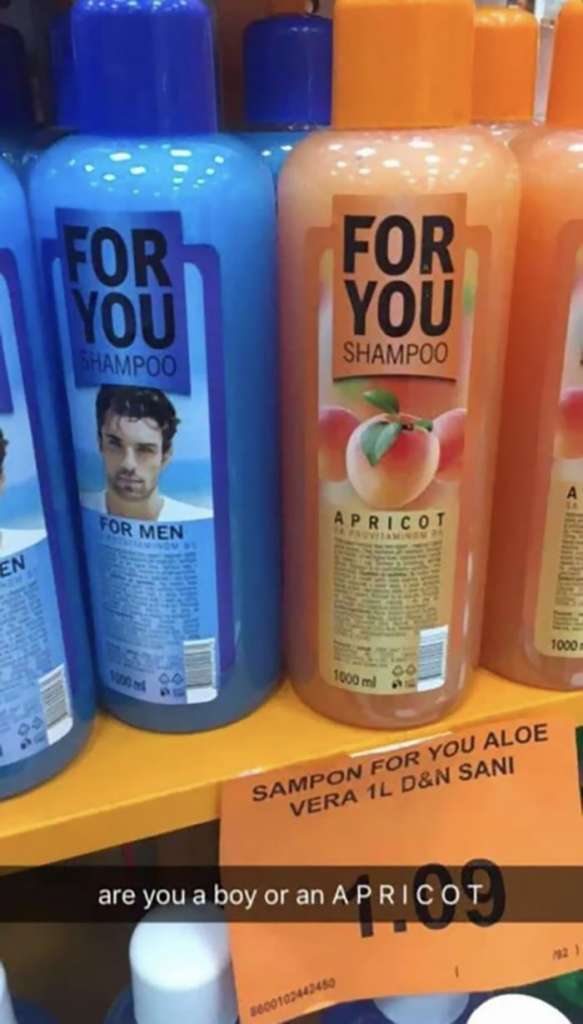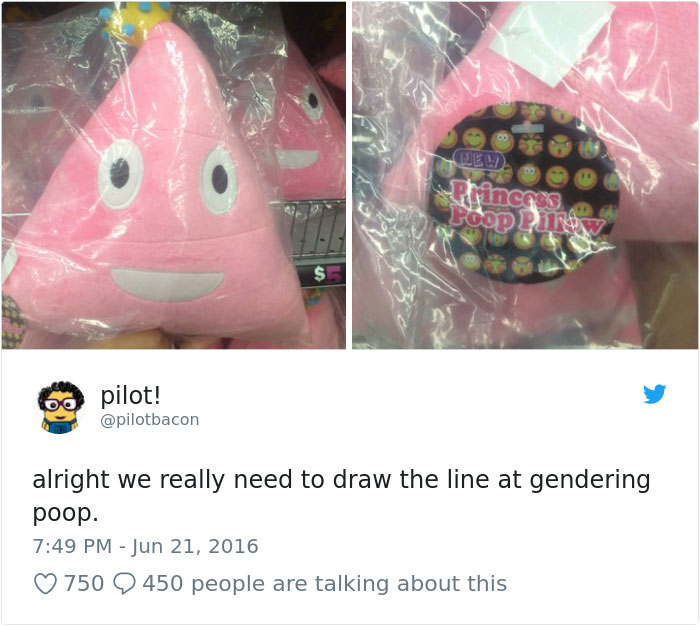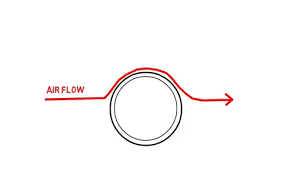Why was I not surprised when it was brought up in the Digital Media lecture that a ‘female’ Pac-Man character was created? Because this is what society does, products and characters are gendered. ALL the time. The problem with this (as I am sure many of you already understand) is that we now live in a time where people are open about no longer conforming to the heteronormative and binary labels of male and female. There are no definitions now for what it means to be ‘female’ or ‘male’, as the borders between the two (that were created in the past) are being blurred every day. However, this is something that has only recently become a more mainstream topic. Gendered items still make up a large portion of consumable items, characters, and bathrooms for example. How hard is it for people to understand that individuals can use/play with ANY ITEMS THEY WANT!? Anyways…
I find the Ms. Pac-Man character almost comedic. How can someone add a hairbow and makeup to a yellow dot and call it female? Not only this, there are versions of Ms. Pac-Man that they have sexualized (see my previous blog post explaining the oversexualization of characters in games).


I think it is so funny that they have attempted to make a yellow dot ‘sexy’. Look at that pose. The legs. The heels. It seems that humans have an obsession with making everything conform to either being male or female. There are hundreds of examples of gendered products that do not make any sense (and that are also completely unnecessary, please check out this link for 115 more examples of gendered and/or sexist products.). For example, BIC pens “For Her” (see below). There is no reason why different people need to have different pens. It’s a pen. There are gendered shampoos, toys, deodorants, even foods.

I really wonder whether this history of gendering and binary allocation comes from the perspective of Foucault and the panopticon (society of control); or as a way for heteronormative beings to constitute, confirm and exhibit their ‘femininity’ or ‘masculinity’. These products could be a way for society to push its agenda of control and especially the control of conforming, docile bodies. Society also seems to have an obsession with exhibiting femininity and/or masculinity which can become toxic and detrimental to the images that people have of themselves and of others.


I propose that we start creating a society in which no products are targeted to either femininity or masculinity. It should be advertised that all products can be used by any person, as when it comes down to it, all of us are just humans and we all have the same bodies. We should be letting children play with any toys they want, not what society tells them they are ‘allowed’ to play with. Normalise neutral products/characters/etc.!!! I hope to see a more inclusive and neutral society and social space as soon as possible.
Have you ever had any experience with gendered products? Or not being able to find a product or space that fits with you gender identity? Let me know what you believe the reasons may be why we have these products in the first place.



I have to say, I have enjoyed all of your posts this semester so I’m not shocked that I like this one too. It is so relatable. I must say that our society has this obsession or need with labelling everything. Obviously that is because when we label, we bring something to life, or rather we confirm something, someone, an entity. From the beginning of time, it has been deeply rooted in our society, to have binaries and opposing sides. There is always a good vs. evil, black vs. white, or male vs. female. But I agree with you, I think that we need to understand that gender neutrality can open so much more space for expression and being comfortable and accepted in society. The term neutral is perfect. people need to understand that it is ok to not walk around with a label, you do not need to fit inside a box, obviously!!! I remember when I was smaller, I liked to play with action man and I enjoyed PS video games. Being a girl, a female, that was not ok. Because apparently, those games and toys are only for boys. So I relate…
After reading your title I was hooked immediately. The Ms. Pac-Man example also was for me one of the take away messages of the lecture. It was such an eye opener for me. Moreover, I really loved your link showing 115 examples of pointlessly gendered products. Some of the examples made me laugh, because they were so silly. Others honestly made me really sad. I often struggle with how not to be a stereotypical ‘girly’ girl, because I want to proof that women often aren’t like the stereotype. That is why I hate to see a children’s book teaching girls how to be gorgeous and boys how to be smart. How can women break the stereotypes if the next generation of girls is still growing up with these kind of stereotypes on how the should become a ‘good’ woman. On another, quite different, note your post also reminded me of the Vogue cover in which Harry Styles is wearing a dress. This is such a nice example of people starting to blur the line between what is typical male and female. However, with a famous singer making a beautiful statement like that, the problem will probably not go away. That is why I agree with your proposal. I think that could really be a nice step towards creating more freedom (of expression) for everybody.
I really liked your blogpost about gendered products. I have also had experiences with gendered products. If you look closely, we can find gendered products all around us that also often further gender stereotypes and roles. For example, there is this company popular for cleaning products in India called Scotch-Brite. Its household cleaning products have a little head of a lady drawn on them which cannot be found on some of its products like a lint remover which is classically advertised towards men for cleaning coats. In this way advertisement is used to further gender stereotypes such as women do household cleaning and men wear coats to go to offices.
I believe for the creation of a neutral society, change should occur from the very roots. I think these products are gendered and push the image of masculinity and femininity in not just toys but also in products for women and men because that’s what kids learn in the very beginning. If you pick up books from kindergartens in almost all countries, be it in India or the US or the Netherlands, even animals and colours are depicted as gendered. A cow will have long eyelashes, or a boy will be drawn saying “Blue is my favourite colour”. These notions of gender and stereotypical roles is learned at a very young age and is thus, pushed forward in adulthood. To create a neutral society, these products definitely need to stop being gendered, but first, the education given to young kids should be altered and the colour blue or pink should just be taught as colours and not as pink is a girl’s favourite or blue is a boy’s favourite colour among other such examples.
First of all, I just realized this is your third post that I am commenting on! I love everything you write and I really think you should start your own blog (or maybe Youtube? 🙂 ). Thank you for writing about this important issue. I scrolled through all examples in the linked article and…. first I was laughing, like how someone can even think about something like this? But on the example of the “girl” airplane where the pilot was a boy, it just hit me. I have an experience from my childhood a little related to it, I always had short hair (they just don’t grow), and almost all my clothes I had after my older cousins (boys). Well, I remember how many times some random people on the street were calling me “pretty boy”, or when I was playing with dolls asking my parents how they can let their son play with “girl” toys. It really messed up my idea on what am I allowed to do for a long time, because first I was a girl who kept being called a boy, and then I couldn’t even play with “girl” toys? Then what can I do? For a very long time, I was refusing to do “lame girl things” because I wanted to be “cool like boys”. I really don’t think this is something good for children’s self-estimate, and it results from gendering everything.